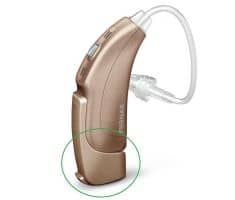A study published online in December 2021 edition of The International Journal of Audiology indicates that 10% of children in Saudi Arabia diagnosed with sensorineural hearing loss (SNHL) were subsequently identified as having auditory neuropathy spectrum disorder (ANSD).
Related article: Cortical Neuroplasticity in Hearing Loss: Why It Matters in Clinical Decision-Making for Children and Adults, by Anu Sharma, PhD, and Hannah Glick, AuD
A retrospective review of medical records of 1025 patients with SNHL identified 101 patients (9.85%) with SNHL. These patients had severe-to-profound hearing loss, and all presented with Type A tympanograms and absent reflexes, absent auditory brainstem response (ABR) findings with present cochlear microphonic. Otoacoustic emissions (OAEs) were absent in 54.5% of patients. Led by lead author Ali Almishaal, AuD, PhD, of the University of Hail in Saudi Arabia, the researchers found the most prevalent risk factors for ANSD were a family history of hearing loss, consanguinity, hyperbilirubinemia, and low birth weight. Pure-tone and speech detection thresholds improved significantly with cochlear implants compared to hearing aid use in this sample of patients with ANSD.
ANSD is generally estimated to account for 5-15% of pediatric SNHL, so the study’s findings are congruent with previous research (eg, Berlin et al 2010, Talaat et al 2009 and Vignesh et al 2016).
The study was funded by the Scientific Research Deanship at University of Ha’il-Saudi Arabia.
To view the original study, visit: https://www.tandfonline.com/doi/abs/10.1080/14992027.2021.2014074?journalCode=iija20&
Citation for the study: Almishaal AA, Saleh S, Alferaih H, Alhelo O. Prevalence, risk factors, and audiological characteristics of auditory neuropathy. Int J Audiol. 2021; DOI: 10.1080/14992027.2021.2014074






